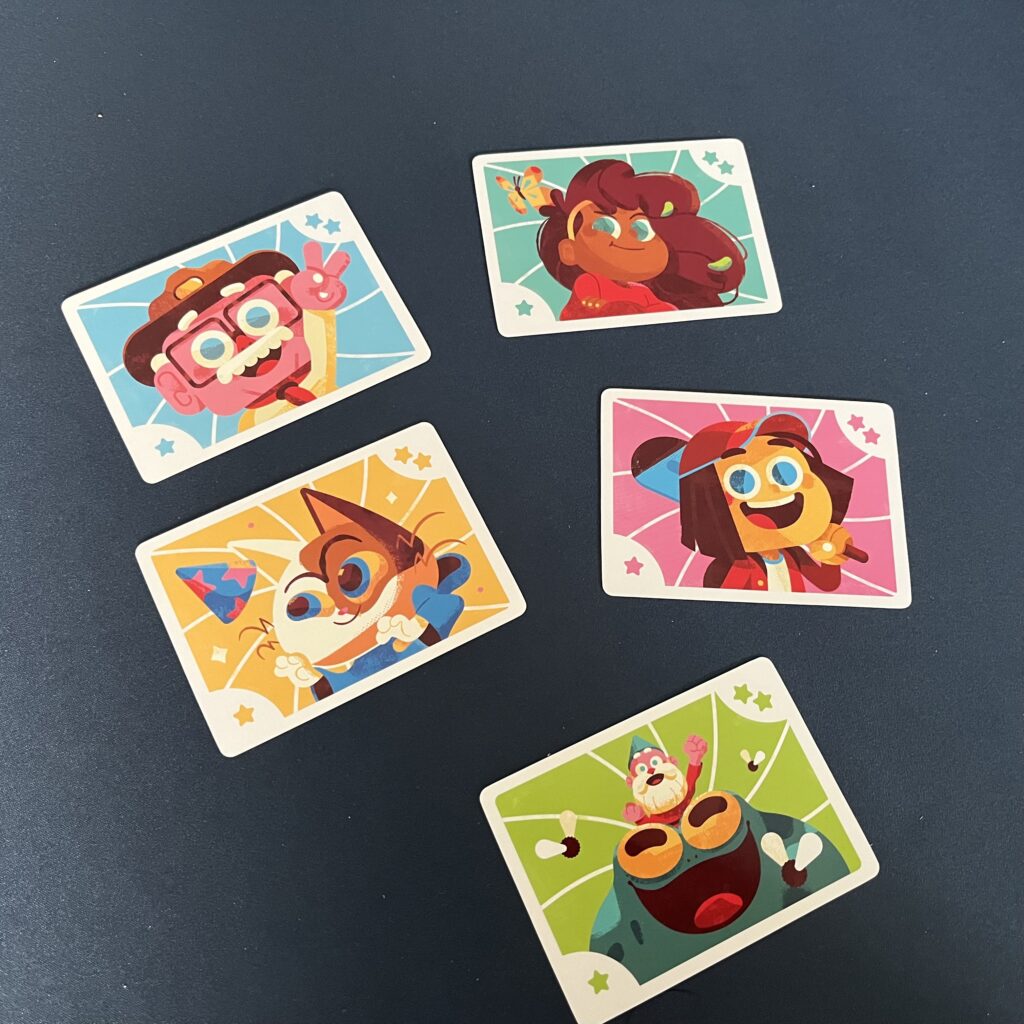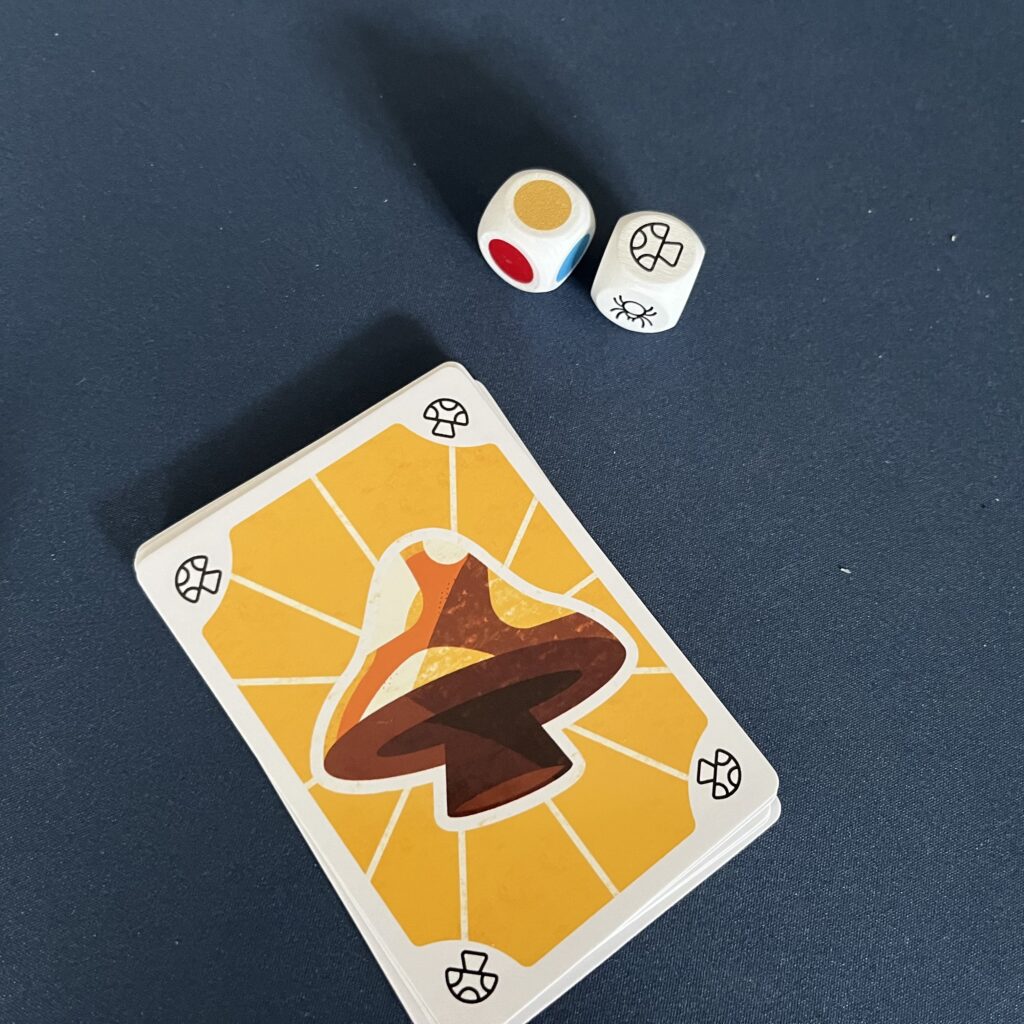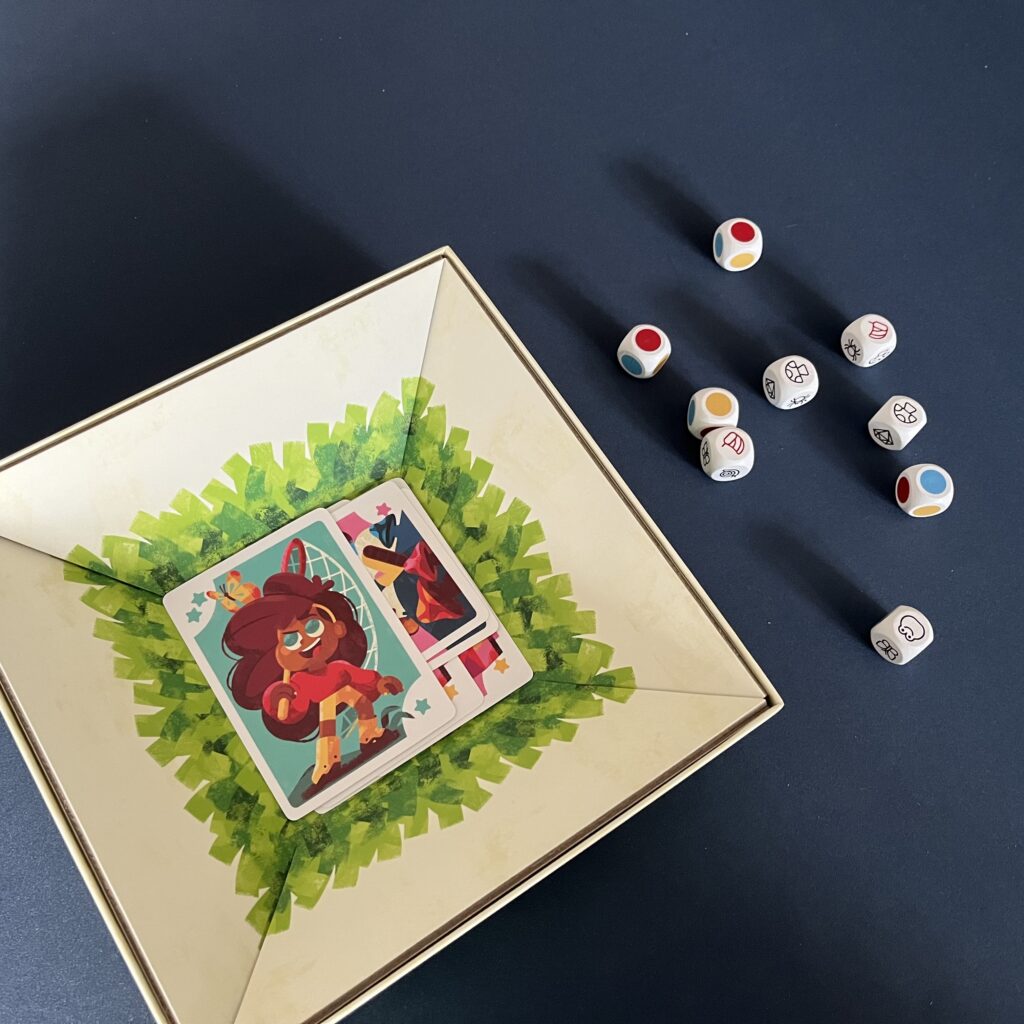Dibs! See something fun or think you’re entitled to something first? Want the last piece of pizza? Dibs! First choice in the candy jar? Dibs! The prettiest girl or boy in the class? Dibs! It’s good to know that some people think that this simple word ensures that they can just appropriate everything they see… In the game of the same name, selfishness takes center stage, as you try to be the first to score cards and steal dice from your opponents. This butterfly is mine! Dibs!
Background & Objectives
The game Dibs! was created by Daniel Danzer and is published by the relatively young Dutch company H-Town games. In their previous game, Beetle to the Bubble, players tried to get their beetles into the nectar bar first after work on a Friday. Beetle to the Bubble is ann upbeat and fast-paced family game with a funny and equally cheerful theme.
Like Beetle to the Bubble, Dibs! is a colorful game. In Dibs! players assume the role of funny characters who participate in one of Grandpa Jones’ famous treasure hunts.

Besides the always good-humored Grandpa Jones, there is also the actual good-humored Gnorbert. Gnorbert is Grandpa’s mischievous garden gnome and comes to life to sleuth along on his trusty steed frog. Other colorful characters are also included.
During the game, players try to stuff the most oddities (such as butterflies, snails, frogs and gems) into their pockets to score the most points. See something you want to claim first? Dibs! At the end of the game, you add up all the points you’ve obtained and the player with the most points wins.
Gameplay
In the middle of the table, place the deck of cards. Each player gets their own stack of cards. One side of the cards allows players to keep track of points and the other side shows a trinket in a certain color. These pictures match the pictures and colors on the dice. Players draw some cards but are not allowed to look at them yet and dice can be rolled.
The starting player rolls all the dice and calls Dibs! as soon as that player is ready. Players may now all look at their cards and simultaneously buy cards from the deck just until players pass.


It sounds simple, but players earn points depending on the symbols on the dice combined with the cards played. The cards are unwound in the order played. If there is a complete match (color and symbol), the dice are put away (hoppa, they no longer count) and the card scored (2 points). If there is a single match, the card is put back in the bin to compete in Phase 2. If there is no match (anymore) then the player who played the card scores a minus point, unless a net has been diced and is still available. In the second phase, discarded cards are given another chance. If there is a single match, the matching die is discarded and a card scores a point and otherwise a mismatch again results in minus points.
With the cards, players keep track of their (minus) points and at the end the starting player shuffles clockwise. The game ends when a player runs out of cards.
Verdict
Dibs! is a fun and fast game for young and old that is easy to explain. There is a small risk that a player will be a bit unsportsmanlike by playing all the cards in hand, but the minus points mitigate that risk. Or alternatively: get rid of those unsportsmanlike friends, because with the right crowd it is a tremendously fun and fast-paced game to start or end the evening. The frenzy and speed, as players must quickly match their cards to the dice, naturally makes for funny chaos. Combine this with the colorful design makes Dibs! a fun family and party game.




